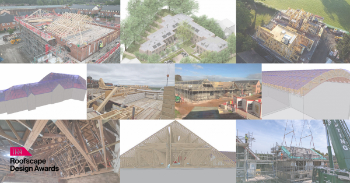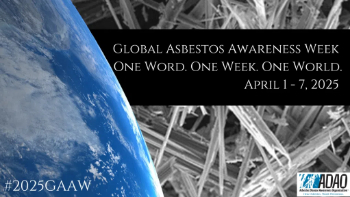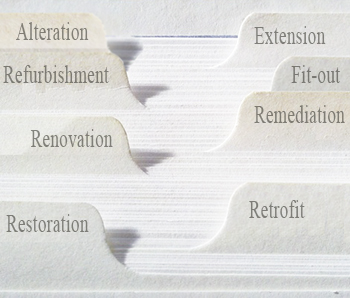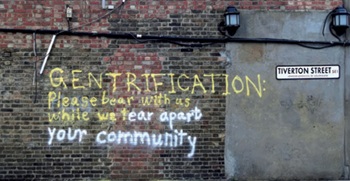Tender price
A tender is a submission made by a prospective supplier (the ‘tenderer’) in response to an invitation to tender (ITT). It makes an offer for the supply of goods or services. A tender price is therefore the price supplied by the tenderer to the client for the supply of those goods or services.
The tender price is usually based on information about the project that has been supplied by the client in the ITT documents. These documents are usually as comprehensive as possible to allow the formulation of accurate tender prices and may include:
- A letter of invitation to tender.
- The form of tender.
- Preliminaries.
- The form of contract.
- A tender pricing document.
- A drawing schedule.
- Design drawings.
- Specifications.
If the client’s documents to not adequately describe the project they could lead to unrealistic tender submissions.
When suppliers submit their tender price, it will represent the price at which they have decided to do the works or supply the goods or services, along with proposals for how the client’s requirements will be satisfied - if these have been requested.
The tender price supplied will be presented in a way set out in the tender pricing document A tender pricing document sets out the way the client wishes to review the breakdown of overall tender prices provided by the tendering contractors.
Because the tender pricing document is designed to allow easy, like-for-like comparisons between the tender prices submitted by the various suppliers, it can reveal to the client where the best value for money lies among the tenderers, identifies significant differences as well as areas where savings can be made or negotiations undertaken.
[edit] Tender price indices
Tender price indices allow tenderers and clients to see how tender prices for building contracts are changing. The indices may be used in estimating, cost-checking and fee negotiation with reference to particular sectors e.g private housing, commercial work etc.
An example is the Tender Price Index of Public Sector Building Non-Housing (or PUBSEC) that is produced by the Building Cost Information Service (BCIS) on behalf of the Department of Business Innovation and Skills (now called the Department for Business, Energy and Industrial Strategy (BEIS).
PUBSEC is based on rates of measured work contained in Bills of Quantities or quantified schedules for accepted tenders. The index, published quarterly, is accurate as it is based only on projects where the procurement process has produced ‘measured work’ documents.
For more information see: Construction price and cost indices.
[edit] Related articles on Designing Buildings Wiki
- Appointing consultants.
- Auction theory.
- Best value.
- Common mistakes in construction tenders.
- Competitive tender.
- Construction contract.
- Construction price and cost indices.
- Due diligence when selecting contractors or subcontractors.
- Form of tender.
- How to prepare tender documents.
- Pre-tender Interviews.
- Margin.
- Mid-tender Interviews.
- Pre-qualification questionnaire.
- Private Finance Initiative.
- Procurement route.
- Tender evaluation.
- Tender processes.
- Things to avoid when tendering.
- Two stage tender.
- Invitation to tender.
- Tender documentation.
- Tender return slip.
- Tender settlement meeting.
Featured articles and news
BSRIA Statutory Compliance Inspection Checklist
BG80/2025 now significantly updated to include requirements related to important changes in legislation.
Shortlist for the 2025 Roofscape Design Awards
Talent and innovation showcase announcement from the trussed rafter industry.
OpenUSD possibilities: Look before you leap
Being ready for the OpenUSD solutions set to transform architecture and design.
Global Asbestos Awareness Week 2025
Highlighting the continuing threat to trades persons.
Retrofit of Buildings, a CIOB Technical Publication
Now available in Arabic and Chinese aswell as English.
The context, schemes, standards, roles and relevance of the Building Safety Act.
Retrofit 25 – What's Stopping Us?
Exhibition Opens at The Building Centre.
Types of work to existing buildings
A simple circular economy wiki breakdown with further links.
A threat to the creativity that makes London special.
How can digital twins boost profitability within construction?
The smart construction dashboard, as-built data and site changes forming an accurate digital twin.
Unlocking surplus public defence land and more to speed up the delivery of housing.
The Planning and Infrastructure Bill
An outline of the bill with a mix of reactions on potential impacts from IHBC, CIEEM, CIC, ACE and EIC.
Farnborough College Unveils its Half-house for Sustainable Construction Training.
Spring Statement 2025 with reactions from industry
Confirming previously announced funding, and welfare changes amid adjusted growth forecast.
Scottish Government responds to Grenfell report
As fund for unsafe cladding assessments is launched.
CLC and BSR process map for HRB approvals
One of the initial outputs of their weekly BSR meetings.
Building Safety Levy technical consultation response
Details of the planned levy now due in 2026.
Great British Energy install solar on school and NHS sites
200 schools and 200 NHS sites to get solar systems, as first project of the newly formed government initiative.
600 million for 60,000 more skilled construction workers
Announced by Treasury ahead of the Spring Statement.

























